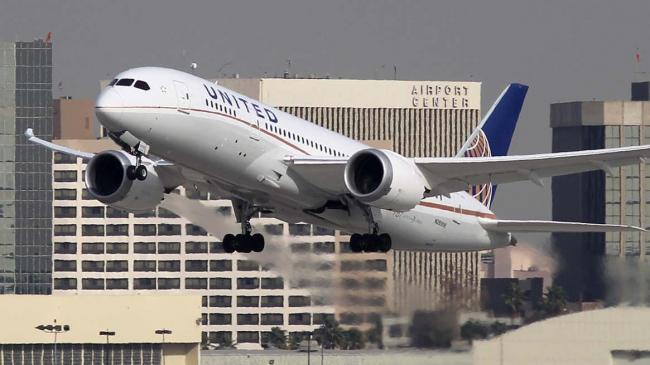Articles Menu

Dec. 2, 2021
United Airlines made aviation history this week, completing a flight between Chicago and Washington DC, using a slightly less environmentally disastrous fuel source—or, as they would prefer you call it, “sustainable aviation fuel” or SAF in aviationspeak.
The flight occurred aboard a Boeing 737 MAX 8 filled with 100 passengers and used around 500 gallons of fuel made up of fats, cooking oils, and grease, produced by the company World Energy. United said the fuel blend emits 80% less carbon dioxide than conventional alternatives over the course of its life cycle.
Many planes already use a mix of SAF’s and regular jet fuel, but current regulations limit airlines to a 50-50 mix at most. United’s demonstration flight was meant to serve as a kind of test showing the possibility of a 100% SAF flight; one engine on the flight ran on sustainable fuel while the other was powered by jet fuel. The company said its Eco-Skies Alliance program has contributed to the purchase of over 7 million gallons of SAF this year. (United also made some pretty shady sustainability commitments earlier this year when it announced its supersonic jet plan.)
SAFs, which can be made using excess biomass like corn, oilseeds, and municipal solid waste streams, claim to offer one possible solution to not cooking the planet. According to the Department of Energy, around 1 billion tons of biomass could be collected each year in the U.S., enough to produce around 50–60 billion gallons of low-carbon biofuel like SAFs. Even better, most current commercial airlines can already implement a blend of SAFs without any major modification to the actual aircraft.
All sounds great. But, well, there’s always a but. While SAFs are preferable to traditional fuel when used in flight, the technology needed to produce the fuel itself isn’t yet sustainable. It’s also extremely expensive. Currently, SAFs cost about four times as much as conventional fuel, according to Aviation Today. For a sense of scale, Delta Airlines CEO Ed Bastian told Bloomberg a year’s worth of the nation’s current SAF supply would be needed to fill its fleet... for a single day.
If policymakers don’t ensure biomass is collected sustainably, they also risk creating their own knock-on environmental effects. Corn-based fuels, for example, could take land out of the rotation for growing food. Sugarcane-based fuels could lead to deforestation, which itself is a huge source of carbon pollution. Still other types of fuels, like those that rely on animal fats, could divert resources away from industries that already use them. (Animal fat is currently used for heating.)
And “sustainable” fuel still pours carbon dioxide and other pollutants into the atmosphere. Depending on how they’re produced, a white paper by the International Council on Clean Transportation published earlier this year, some SAFs can actually end up with higher carbon footprints than conventional jet fuel.
SAFs have caught the U.S. government’s attention as well. Back in September, President Joe Biden signed an executive order increasing funding opportunities and research and development, with the ultimate goal of reducing aviation emissions by 20% come 2030. That’s part of a longer-term ambition of creating a “fully zero-carbon aviation sector by 2050.” But regulations to clean up the airline industry at home and abroad are majorly lacking.
Electrifying aircraft would negate the need for any of these fuels. Though there are a number of companies and startups exploring the possibility of electric flight, current limitations in battery technology make these options far less efficient than jet fuel. As of 2018, jet fuel yielded about 14 times as much usable energy as a state-of-the-art lithium-ion battery. Batteries are also extremely heavy, making them poor options for long-range travel. NASA is reportedly nearing the completion of its groundbreaking X-57 Maxwell, an electric plane. But that will likely have a top range of 100 miles (160 kilometers) at best. (It’s also not the size of a commercial aircraft.) If only there were another way to reliably get across the country...